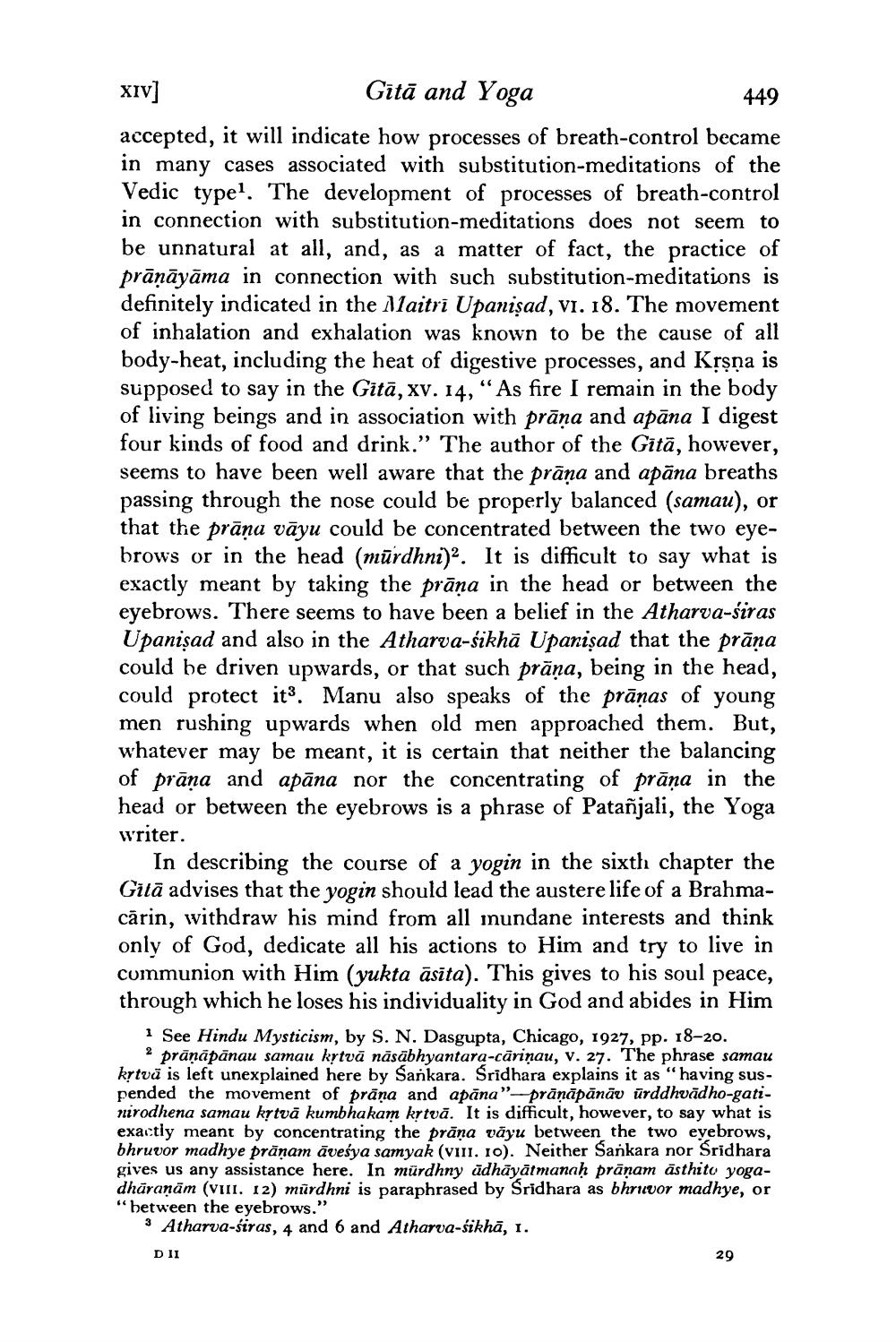________________
XIV] Gītā and Yoga
449 accepted, it will indicate how processes of breath-control became in many cases associated with substitution-meditations of the Vedic type. The development of processes of breath-control in connection with substitution-meditations does not seem to be unnatural at all, and, as a matter of fact, the practice of prāņāyāma in connection with such substitution-meditations is definitely indicated in the Maitri Upanisad, vi. 18. The movement of inhalation and exhalation was known to be the cause of all body-heat, including the heat of digestive processes, and Krsna is supposed to say in the Gītā, xv. 14, “As fire I remain in the body of living beings and in association with prāņa and apāna I digest four kinds of food and drink.” The author of the Gītā, however, seems to have been well aware that the prāņa and apāna breaths passing through the nose could be properly balanced (samau), or that the prāna vāyu could be concentrated between the two eyebrows or in the head (mūrdhni)2. It is difficult to say what is exactly meant by taking the prāņa in the head or between the eyebrows. There seems to have been a belief in the Atharva-siras Upanişad and also in the Atharva-śikhā Upanişad that the prāņa could be driven upwards, or that such prāņa, being in the head, could protect it?. Manu also speaks of the prāņas of young men rushing upwards when old men approached them. But, whatever may be meant, it is certain that neither the balancing of prāņa and apāna nor the concentrating of prāņa in the head or between the eyebrows is a phrase of Patañjali, the Yoga writer.
In describing the course of a yogin in the sixth chapter the Gitā advises that the yogin should lead the austere life of a Brahmacārin, withdraw his mind from all inundane interests and think only of God, dedicate all his actions to Him and try to live in communion with Him (yukta āsīta). This gives to his soul peace, through which he loses his individuality in God and abides in Him
See Hindu Mysticism, by S. N. Dasgupta, Chicago, 1927, pp. 18-20. ? prāṇāpānau samau kytvā nāsābhyantara-cāriņau, v. 27. The phrase samau krtvā is left unexplained here by Sankara. Sridhara explains it as “having suspended the movement of prāna and apāna"-prāņāpānāv urddhvădho-gatinirodhena samau kytvā kumbhakam krtvā. It is difficult, however, to say what is exactly meant by concentrating the prāna vāyu between the two eyebrows, bhruvor madhye prānam āvesya samyak (VII. 10). Neither Sankara nor Sridhara gives us any assistance here. In mürdhny ūdhāyātmanaḥ prānam āsthito yogadhāraņām (VII. 12) murdhni is paraphrased by Sridhara as bhruvor madhye, or "between the eyebrows."
3 Atharva-siras, 4 and 6 and Atharva-śikhā, 1.
DII




